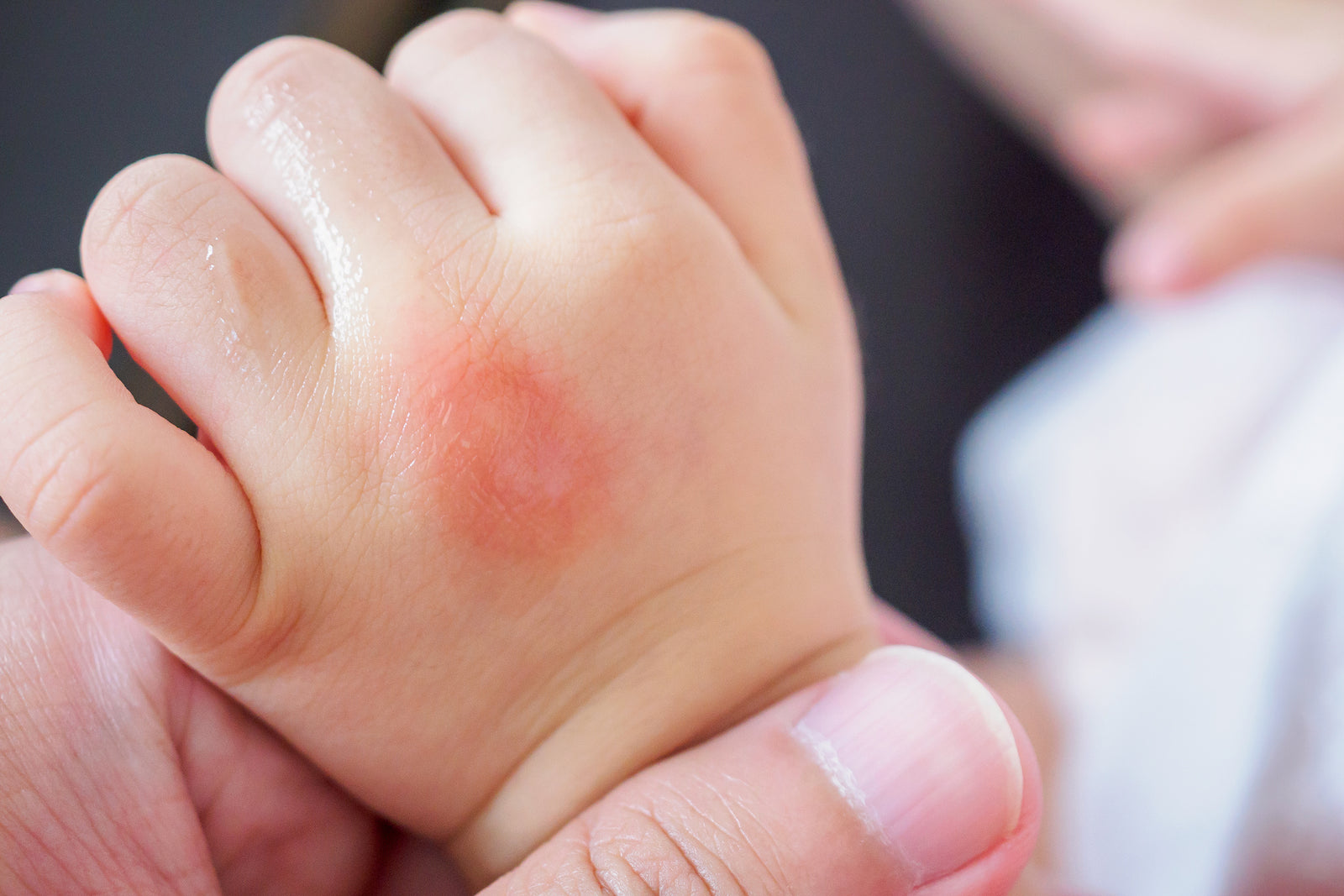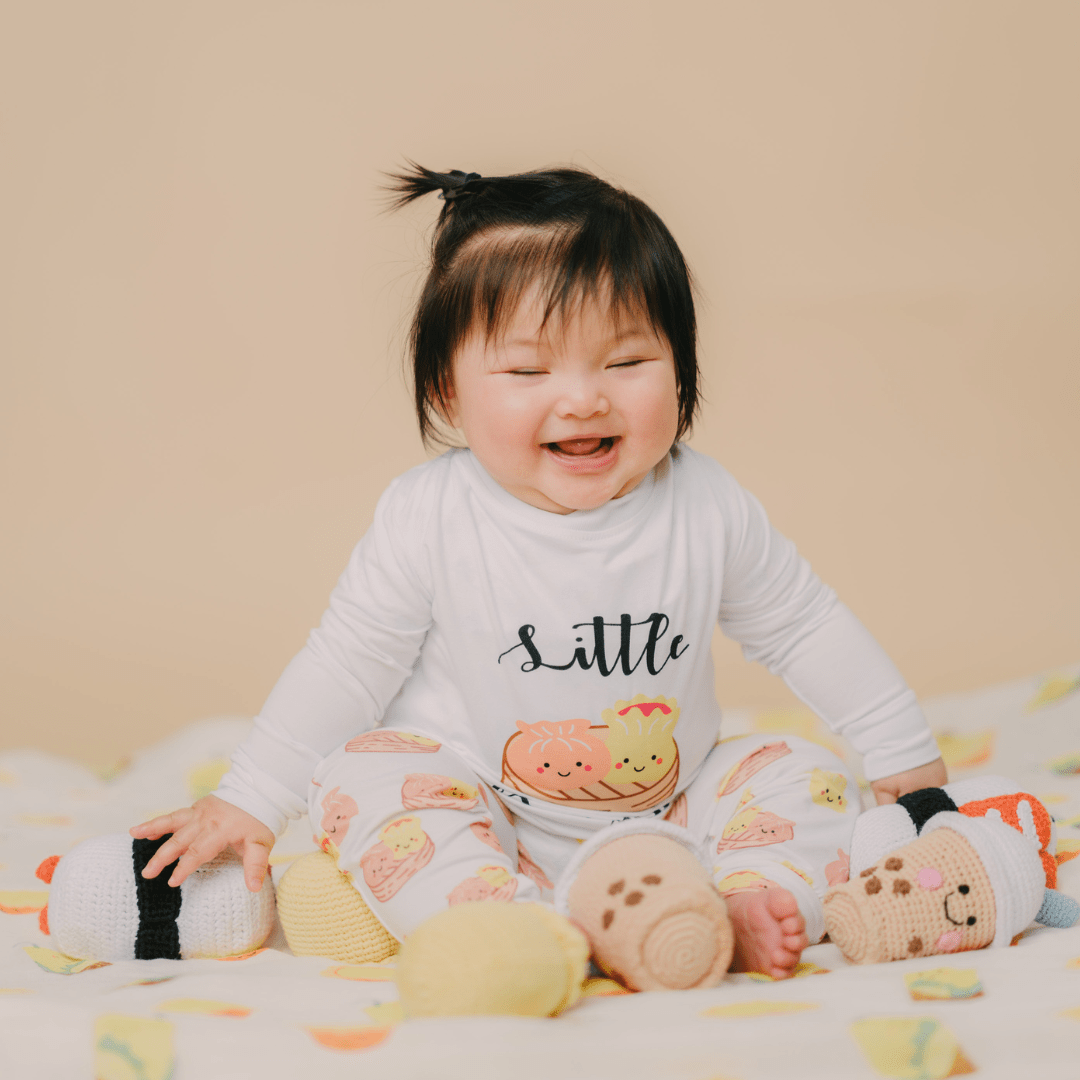Your Cart is Empty
Gift Sets
Categories

Baby Eczema 101: Causes, Symptoms, and Treatment
by Amy Ma October 08, 2022 3 min read
When parents first hold their newborn baby, they instantly notice how smooth and unblemished their skin is. After a few months, though, parents may start to notice patches of red, irritated skin on various parts of their baby’s body. Although there are many infant skin conditions and rashes, one of the most common is eczema.
But what is baby eczema exactly? And how can parents treat this infant skin condition without harming their child? This guide will tell you everything you need to know about eczema in babies, including its causes, symptoms, and treatment methods you can try at home.

What Is Baby Eczema?
Baby eczema is a common skin condition that affects infants and toddlers. It causes random patches of skin to appear dry and rough. It can also become itchy or painful. Although eczema in babies commonly appears on their cheeks and face, it can pop up anywhere on the body.
There are also different types of baby eczema, which affect different parts of the body. The most common type of eczema in babies is called atopic dermatitis. This type of eczema usually appears on a baby’s face, hands, and feet. Many infants also experience a form of eczema called seborrheic dermatitis, which is commonly called cradle cap.
What Does Baby Eczema Look Like?
Dermatitis typically starts out as red, dry patches of skin, but depending on your child’s complexion, it can look red, purple, brown, or gray. Unfortunately, this makes it harder to see on children with darker skin tones. Over time, you may notice these patches of irritated skin come and go. They may disappear completely, only to reappear within a matter of days.
Other Common Eczema Symptoms
Though eczema in babies commonly looks like patches of red, scaly skin, you may notice that eczema might also cause:
- Fluid-filled blisters that may ooze or form crusty scabs
- Painful, deep cracks called fissures
- Itching sensations, swelling, sensitivity/pain around the affected area
- Fever or chills

Causes of Eczema in Babies
Researchers haven’t determined exactly what causes eczema in babies, but most doctors believe a combination of genetic and environmental factors are responsible.
For example, recent research studies discovered that the bacterial composition is different for babies who experience eczema than those who do not. This means that eczema in babies could be linked to specific types of bacteria that seem to naturally occur on an infant’s skin.
However, other studies have linked skin barrier issues to dermatitis in infants. Many children who experience eczema appear to have an overactive immune response when their skin is exposed to certain chemicals and fabrics.
Regardless of the exact cause, researchers are investigating how different bacteria, viruses, yeasts, and chemicals contribute to eczema symptoms. For this reason, many doctors recommend that parents keep a close eye on what their child eats to the types of fabrics used in their clothing when trying to identify causes of eczema.

Treatments for Eczema in Babies
Preventing Baby Eczema
Like most other skin conditions, prevention is the number one goal. But what can you do to prevent eczema in babies?
- Moisturize your baby’s skin regularly
- Minimize exposure to identified triggers
- Bathing your child regularly
- Dressing your child in all natural fabrics
This is why The Wee Bean uses organic cotton and bamboo in most of our products. We know that these materials are what’s best for your baby, and we are committed to helping you care for your child’s delicate skin. We also have several great tips to help you prevent an eczema breakout.
Home Remedies for Eczema in Babies
The easiest way to treat your baby’s eczema is through prevention and there are many home remedies you can consider. We recommend pursuing natural remedies for baby eczema first, then trying out over-the-counter methods if those don’t work.
For example, you can use coconut oil and colloidal oatmeal to moisturize your baby’s skin and prevent itching and inflammation. If these don’t work, you can try a fragrance free ointment like Vaseline (petroleum jelly) to treat the eczema.
For more information on treating your baby’s eczema at home, check out our post on natural remedies for baby eczema.
When to See a Doctor
Unfortunately, eczema flare ups can quickly become serious issues that require medical attention. You should always consult your child’s doctor if you notice that your baby has developed a fever alongside their eczema, or when the patches of eczema turn into fluid-filled blisters or sores that are sensitive to touch.
Leave a comment
Comments will be approved before showing up.
Also in Latest Blog Posts

Giving Back: How to Involve Your Kids in Charity During Christmas
by Adrian Ma November 27, 2025 6 min read
The Christmas season always feels a little magical, doesn’t it? Between the family gatherings, twinkling lights, school holiday excitement, and the smell of something sweet in the oven, this time of year carries a sense of warmth that’s hard to match. But beyond the gift exchanges and festive fun, Christmas is the perfect opportunity to teach our children something far more meaningful: the joy of giving back.

Eco-Friendly Christmas: Sustainable Gift Ideas for Conscious Families
by Adrian Ma November 19, 2025 5 min read
The holidays are all about joy, connection, and giving but they can also be one of the most wasteful times of the year. According to theU.S. Environmental Protection Agency (EPA), household waste increases by almost 25–30% between Thanksgiving and New Year’s Day, largely due to packaging, disposable decorations, and short-lived gifts.
Recently viewed products
Sign up to get 15% OFF your first order
Sign up to get the latest on sales, new releases and more …

